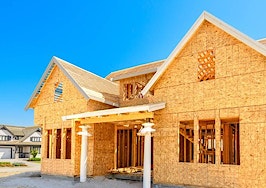- Home prices nationwide -- including distressed sales -- increased by 6.4 percent year-over-year in September 2015.
- Home price increases have been stable for the last 15 months, ranging between a 4.8 percent and 6.5 percent year-over-year increase.
- The number of overvalued top markets doubled from the first quarter to the second quarter.
Home prices nationwide — including distressed sales — increased by 6.4 percent year-over-year in September 2015 and increased by 0.6 percent month-over-month, according to the September 2015 CoreLogic Home Price Index report.
Home prices are projected to increase by 4.7 percent on a year-over-year basis from September 2015 to September 2016, but could potentially dip slightly from September 2015 to October 2015, said the global property information provider.

This tallies well with the prevailing market story of stability.
“After nearly 10 years of very high home price volatility, home price increases have been remarkably stable for the last 15 months, ranging between a 4.8 percent and 6.5 percent year-over-year increase,” said Sam Khater, deputy chief economist for CoreLogic.
“Home price volatility is now back to the long-term trend prior to the boom and bust, which is a good barometer of the market’s stability and health,” he added.
CoreLogic noted that the nationwide housing market is expected to remain within normal levels of the long-term sustainable level through 2017, with most of the top 100 markets normally valued.

During the housing bubble from 2005 through 2007, home prices were significantly more than 10 percent above the long-run sustainable levels. Then in the market collapse, home prices quickly fell more than 10 percent below sustainable levels during late 2010.
“The continued growth in home prices is welcome news for many homeowners, but more markets are becoming overvalued,” said Anand Nallathambi, president and CEO of CoreLogic.
“In the near term, this trend is likely to continue and pose evaluated risks to the housing economy,” he said.
In September, CoreLogic Market Condition Indicators found that the number of overvalued top markets doubled from the first quarter to the second quarter. Five of the six top markets in Texas were on the list, as well as Denver-Aurora-Lakewood.
“More has to be done to expand inventories if we are going to address the emerging affordability crisis, especially in hot markets like California and Colorado,” said Nallathambi.
New construction is an important part of this equation, CoreLogic said.









